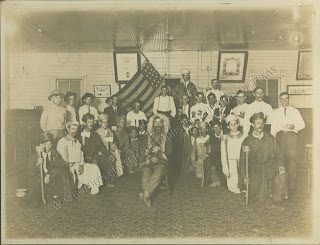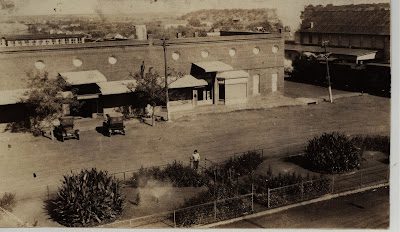Forgotten Traditions
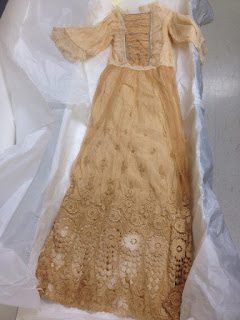
By Katie Gaudette
Once upon a time, weddings were simple affairs laden with tradition that gave them great meaning. Today weddings are a multi-billion dollar industry. Every bride is convinced that she needs to spend thousands of dollars on this special event. In the rush to get every detail right, many have forgotten old wedding traditions that were once precious and meaningful. All of this comes to mind when stumbling upon a treasure in our collections vault.
This treasure is a dress that was once ivory colored. The detail is incredible, especially knowing that the wearer made it herself. Most of the dress is covered in tulle embroidery style lace. The hem catches the eye as the intricacy of embroidery lace increases. Venice lace in a Queen Anne pattern adorns cut outs all around the dress in a cascading circle pattern. The beauty of the dress is striking even with the discoloration caused by 103 years of storage. With the dress is a handkerchief that has a large “E” embroidered on one corner. This was carried by the bride on the day of her wedding.

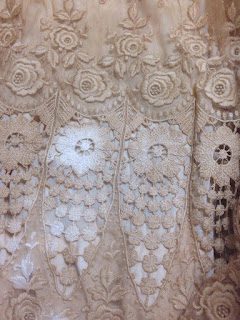
Ritchey Collection, W. K. Gordon Center
The bride wore this beautiful dress in 1914, at sixteen years old; her name was Veronica Sue Galik, one of nine children. Born in Canada she was the product of an Austrian Polish father and a German Polish mother. Her father, Jacob Galik, worked as a coal miner for the Texas Pacific Coal Company. Most likely the family lived on Polander Hill in Thurber. Veronica’s groom was a coal miner named Frank Bida, a Polish immigrant. Bida spoke only Polish. One wonders how the pair spoke to each other considering Veronica most likely spoke English while Bida spoke only Polish, unless Veronica spoke two languages. This also begs the question of how well the two knew each other at the time of their marriage.
One of the things that the wedding industry has caused us to lose from our weddings are the traditions that were once the focus of these gatherings. Because of the recent immigration of Bida and the Galik’s, Veronica and Frank more than likely observed these traditions like the blessings of salted bread and wine and the ozepiny. In the blessing of salted bread and wine, each of the parents of both bride and groom give the couple a blessing followed by the couple biting into salted bread, taking a drink of wine, then smashing the glass for good luck. The bread represents prosperity. The salt represents the difficult times the couple will face, and the wine symbolizes that the couple will never thirst again.
The ozepiny is a ritual in which single women stand in a circle around the bride, then one of the single women takes the veil off the bride. Finally a married woman pins a hat on the brides head as the circle around her becomes a circle of married women to signal the bride’s transition into a married woman. These are just a few of the many Polish wedding traditions that Veronica Galik and Frank Bida observed at their wedding.
Veronica and Frank more than likely had a simple wedding full of meaningful tradition, while most American weddings are now more about the decoration and the catered meal than the meaning of the wedding. This loss of heritage specific traditions speeds up as immigrant families assimilate into American culture with little more than their last name as a link to their family heritage.
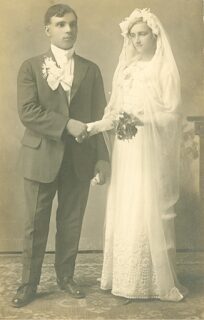
on their wedding day, 1917
Ritchey Collection, W. K. Gordon Center



